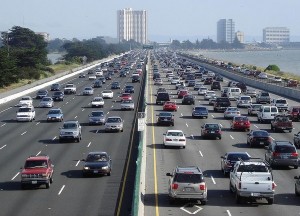The National Highway Traffic Safety Administration released a press release Monday urging owners of certain Toyota, Honda, Mazda, BMW, Nissan, and General Motors vehicles to act immediately on recall notices to replace defective Takata airbags. The message expresses the need for urgency when responding to this issue, especially for owners of vehicles affected by the regional recalls in the following areas: Florida, Puerto Rico, Guam, Saipan, American Samoa, Virgin Islands and Hawaii.
 Consumers who are unaware whether or not their vehicle is impacted by the Takata recalls, or any other recall, can check on www.safercar.gov/vinlookup. Once on the site, you can search by your vehicle identification number in order to confirm whether your vehicle has an open recall that needs to be addressed. Additionally, consumers can sign-up for NHTSA recall alerts, which go out before recall letters are mailed by the manufacturers to the affected owners.
Consumers who are unaware whether or not their vehicle is impacted by the Takata recalls, or any other recall, can check on www.safercar.gov/vinlookup. Once on the site, you can search by your vehicle identification number in order to confirm whether your vehicle has an open recall that needs to be addressed. Additionally, consumers can sign-up for NHTSA recall alerts, which go out before recall letters are mailed by the manufacturers to the affected owners.
Affected Vehicles Involving Takata Airbags:
Toyota: 778,177 total number of potentially affected vehicles
2002 – 2004 Lexus SC
2003 – 2004 Toyota Corolla
2003 – 2004 Toyota Corolla Matrix
2002 – 2004 Toyota Sequoia
2003 – 2004 Toyota Tundra
2003 – 2004 Pontiac Vibe
Honda: 2,803,214 total number of potentially affected vehicles
2001 – 2007 Honda Accord (4 cyl)
2001 – 2002 Honda Accord (6 cyl)
2001 – 2005 Honda Civic
2002 – 2006 Honda CR-V
2003 – 2011 Honda Element
2002 – 2004 Honda Odyssey
2003 – 2007 Honda Pilot
2006 – Honda Ridgeline
2003 – 2006 Acura MDX
2002 – 2003 Acura TL/CL
Nissan: 437,712 total number of potentially affected vehicles
2001 – 2003 Nissan Maxima
2001 – 2003 Nissan Pathfinder
2002 – 2003 Nissan Sentra
2001 – 2003 Infiniti I30/I35
2002 – 2003 Infiniti QX4
2003 – Infiniti FX
Mazda: 18,050 total number of potentially affected vehicles
2003 – 2004 Mazda6
2004 – Mazda RX-8
BMW: 573,935 total number of potentially affected vehicles
2000 – 2005 3 Series Sedan
2000 – 2006 3 Series Coupe
2000 – 2005 3 Series Sports Wagon
2000 – 2006 3 Series Convertible
2001 – 2006 M3 Coupe
2001 – 2006 M3 Convertible
General Motors: 133,221 total number potentially affected vehicles
2002 – 2003 Buick LeSabre
2002 – 2003 Buick Rendezvous
2002 – 2003 Cadillac DeVille
2002 – 2003 Chevrolet Trailblazer
2002 – 2003 Chevrolet Impala
2002 – 2003 Chevrolet Monte Carlo
2002 – 2003 Chevrolet Venture
2002 – 2003 GMC Envoy
2002 – 2003 GMC Envoy XL
2002 – 2003 Oldsmobile Aurora
2002 – 2003 Oldsmobile Bravada
2002 – 2003 Oldsmobile Silhouette
2002 – 2003 Pontiac Bonneville
2002 – 2003 Pontiac Montana
As of now, four deaths have been attributed to defective components found in Takata airbags, which were predominantly used in vehicles from every major automaker from 2000 through 2007. The deaths have occurred in Virginia, Oklahoma, California and Florida. Additionally, 139 injuries have also been reported that were caused by the Takata airbags.
 Florida Personal Injury Lawyers Blog
Florida Personal Injury Lawyers Blog










